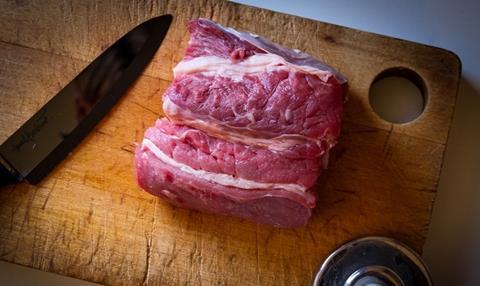According to Kantar Worldpanel, this lockdown period will see 503 million more in-home meals eaten per week, with the amount of meat consumed by families also increasing.

As reported by the Agriculture and Horticulture Development Board (AHDB), Sliced cooked meats are estimated to feature in an additional 35 million more meals a week, with 91% of this growth predicted at lunchtime. Ham would be expected to be the biggest beneficiary as it holds the largest slice of the category.
Looking at primary meats, fresh beef will be a big winner, featuring at ten million more meals per week with 70% of this growth expected to be in the evening.
Fresh poultry remains common place with consumers and is estimated a rise of 16 million additional meals.
It is anticipated that pork will feature in four million more meals per week, with 61% expected in the evening and 38% at lunchtime.
“For instance, for meat it may find product volumes by cuts do not directly transfer into homes. So, it may well be that uplifts in mince are higher than that of steaks."
Three million more meals will feature lamb – 49% at dinner and 50% at lunch. Essentially because of the sizeable rise in meals eaten in the home, all categories are expected to achieve growth, ranging from 20 to 72%, with the average for primary red meat standing at 31%.
Fresh bacon will be served in eight million more meals per week and chilled burgers and grills will be boosted by an additional one million occasions. Mince will feature in six million more meals per week– the majority in the evening (74%) and roasting joints will make up five million new occasions.
Steven Evans, senior consumer insight manager at AHDB, said: “One critical element that plays a significant role is that consumers are unlikely to directly replicate exact meals in the home that they would have eaten when out. Often foodservice provides an opportunity for people to try new dishes/meals that would be too complex to re-create in home.
“For instance, for meat it may find product volumes by cuts do not directly transfer into homes. So, it may well be that uplifts in mince are higher than that of steaks. Looking at the types of dishes, it’s likely to be those which are firm family favourites such as Italian, stews and those meals which are simple, hearty, filling or comforting treats for families which benefit the most.
“Meal choices made by consumers are also weather dependent, for instance BBQ related products like burgers and sausages could do well if the sun shines.”
This story was originally published on a previous version of the Meat Management website and so there may be some missing images and formatting issues.












